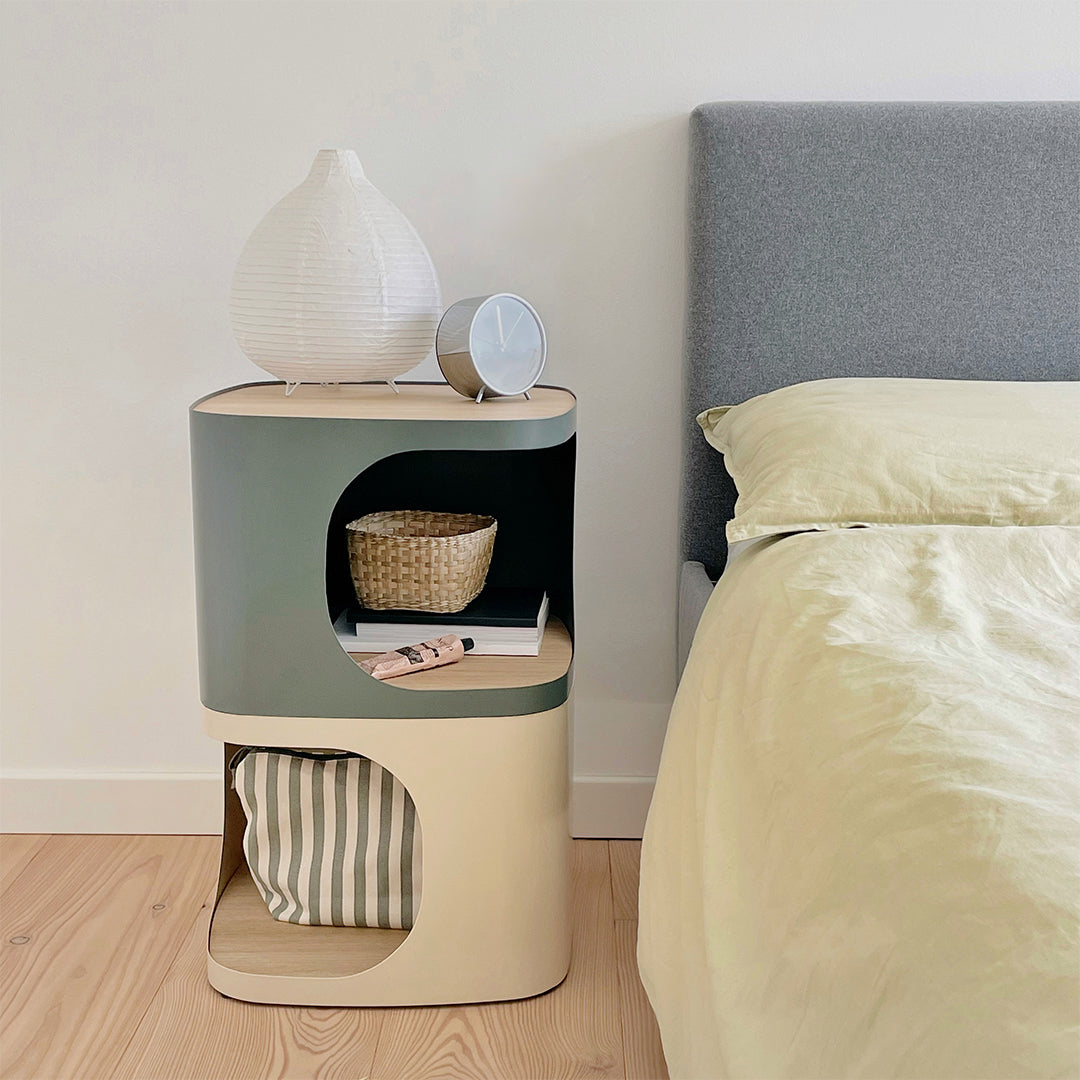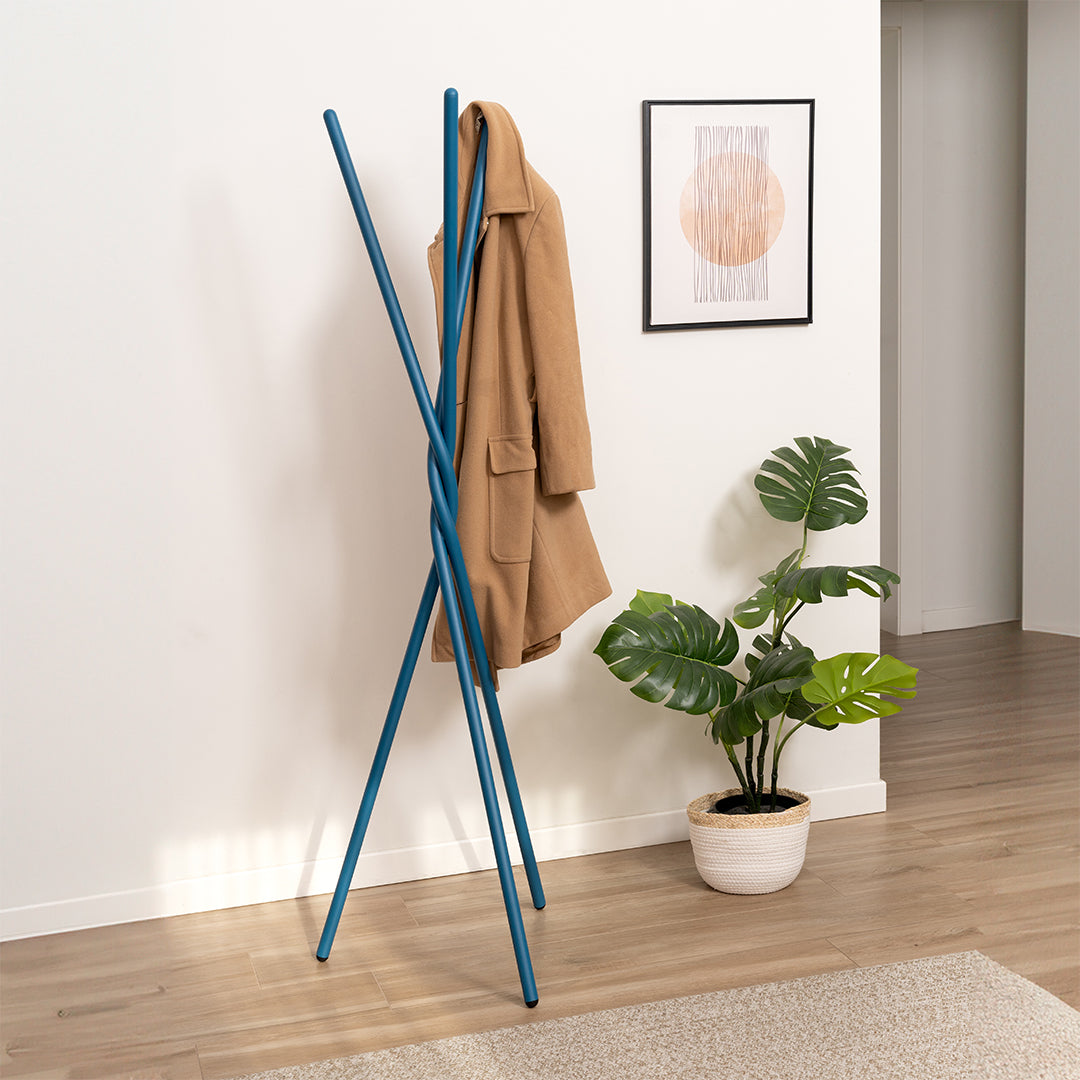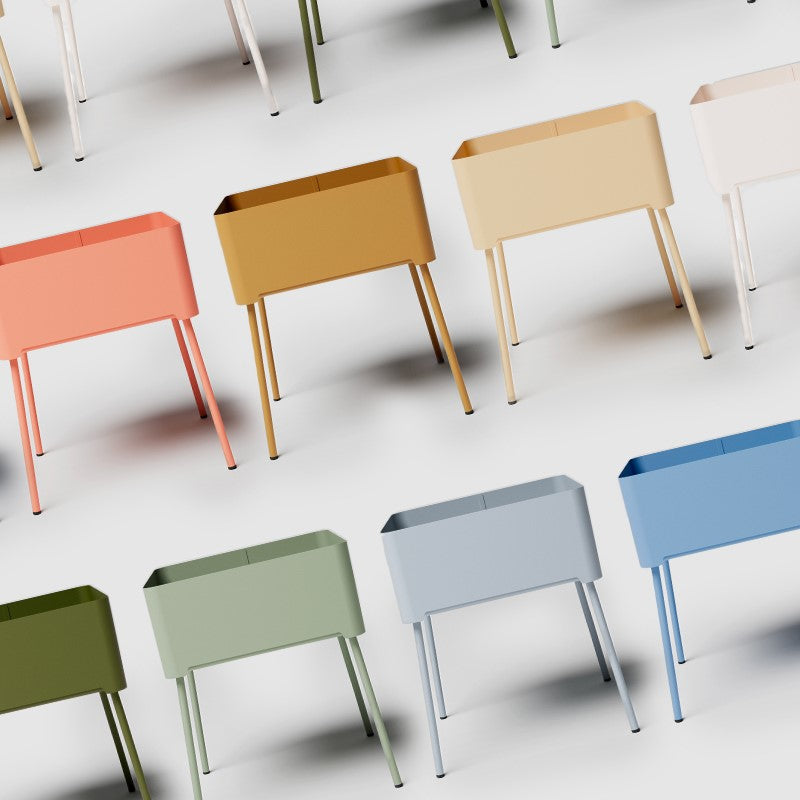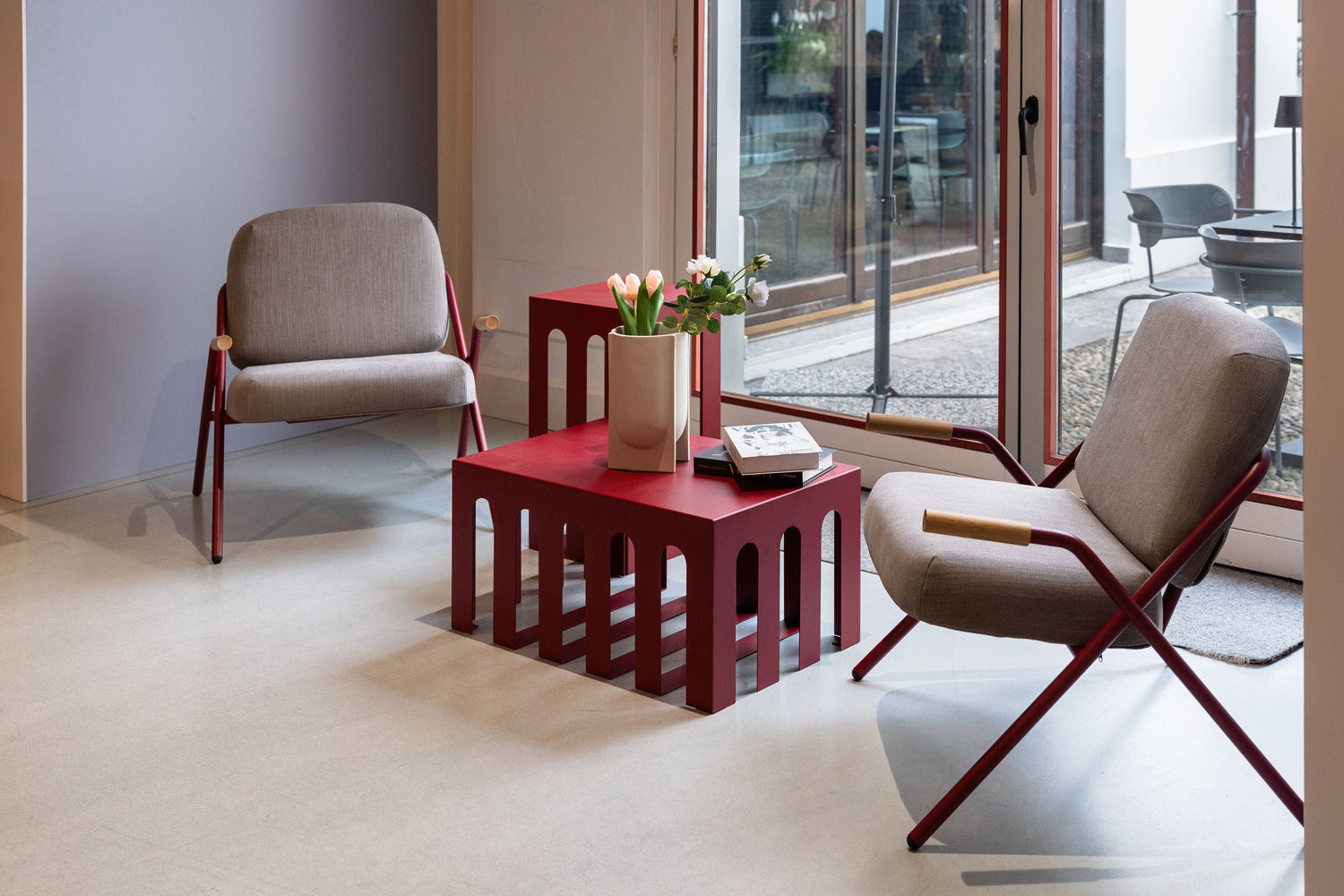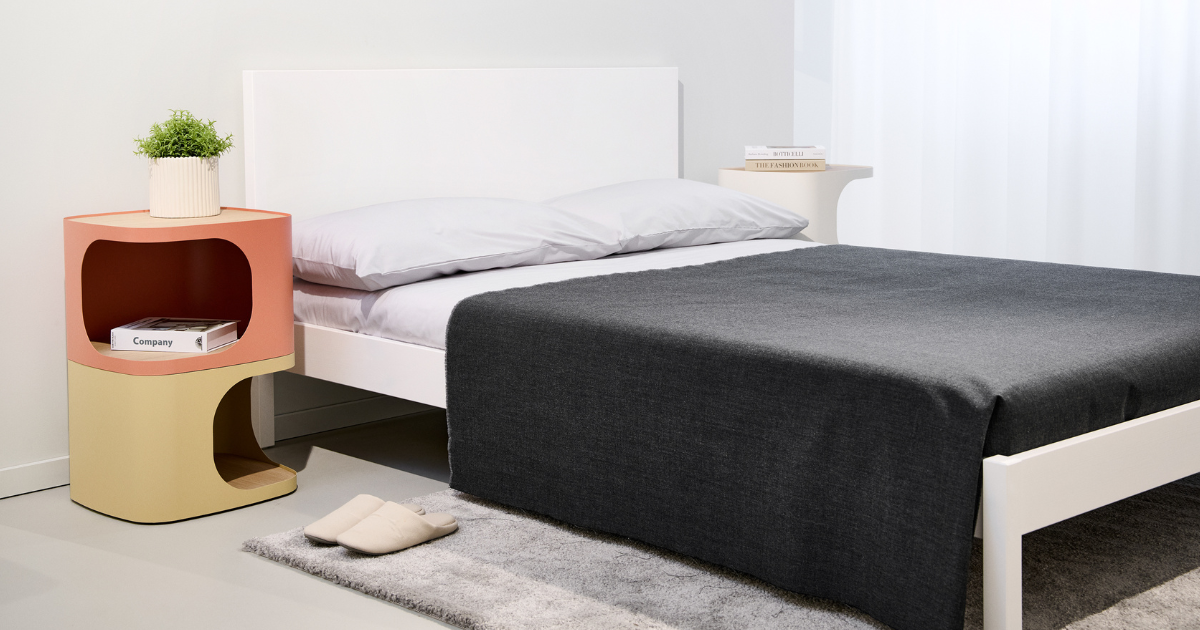Fuori piove, fa freddo e il cielo è di quel grigio triste che mette malinconia?
Se è vero che con il meteo non possiamo farci niente, è pur vero che, al contrario, in casa possiamo contrastare quel grigiore che sembra spegnere tutto.
Come? Con il colore, Basta selezionare le giuste tinte calde per plaid, cuscini, accessori e nuovi complementi d'arredo come tavolini, mensole, appendiabiti e vassoi.
E se pensi che i colori caldi siano solo per le case in stile rustico, preparati a ricrederti: in questo articolo ti sveliamo alcune proposte cromatiche perfette per incontrare la tua palette preesistente e il tuo stile, dall’essenziale scandinavo al retrò più sofisticato.
Come i colori caldi influiscono sulla nostra percezione del calore
Sai che i colori influenzano davvero la nostra percezione della temperatura?
Uno degli esperimenti più noti è stato condotto negli anni ‘70 dallo psicologo Humphrey Osmond e ripreso in seguito da vari studi di psicologia ambientale.
In breve, è stato chiesto a un gruppo di persone di entrare in due stanze diverse, con la stessa temperatura effettiva, ma con colori diversi sulle pareti:
- una stanza con pareti rosse e arancioni;
- una stanza con pareti blu e verdi.
Il risultato? Le persone nella stanza rossa-arancione dicevano di sentire più caldo rispetto a quelle nella stanza blu-verde, ma la temperatura era identica.
Quindi, la nostra percezione del calore non dipende solo dalla realtà fisica, ma anche dal modo in cui il nostro cervello interpreta i colori intorno a noi.
Ecco perché, anche senza aumentare la temperatura reale della stanza, circondarsi di tonalità calde può farci sentire più avvolti e coccolati.
Dicci che palette hai e ti daremo il colore caldo perfetto per il tuo spazio
Non temere di aggiungere un colore caldo alla tua palette.
Ti facilitiamo le cose con qualche esempio pratico.
- Se hai una palette tutta incentrata sui toni del blu, del grigio o dei verdi freddi come smeraldo, petrolio o turchese, puoi sorprendere con un tocco di rosso inaspettato. Per esempio, puoi abbinare al tuo divano un tavolino rosso Frida o argilla.
Puoi usare questi stessi colori per aggiungere vitalità e contrasto a un bagno tutto grigio, puntando su accessori bagno di design.
- Se, al contrario, hai una palette tutta neutra o un ambiente composto da essenze di legno caldo e verdi come salvia, oliva o verde militare, punta sul color cannella.
È un marrone terroso che aggiungerà calore e carattere ai tuoi interni.
Puoi usarlo, per esempio, per il mobile tv o in dosi più piccole, per vassoi o mensole decorative.
- Le tinte pastello e il legno chiaro sono la tua passione? Allora il terracotta e il vaniglia sono perfetti per la tua palette. Si sposano bene con tutti i colori “confetto”, anche con quelli più freddi come verde menta e celeste polvere.
- Infine, se i tuoi interni sono dominati dal bianco e presentano dettagli in legno e in ottone o oro, puoi rendere l’ambiente più caldo e raffinato con un tocco elegante di rosa antico.
Colore cannella: un abbraccio caldo e avvolgente
Il colore cannella (RAL 8000) è un marrone speziato, intenso e terroso, che richiama il fascino delle terre d’Oriente. È un colore che avvolge e rassicura, perfetto per rendere uno spazio più accogliente, senza stravolgerlo.
Funziona benissimo con il legno naturale, il beige e il verde oliva, ma sa sorprendere anche accanto a dettagli in ottone e velluto blu notte.
Il cannella, poi, è un ottimo legante per una palette autunnale che ingloba diversi colori caldi, come rosa cipria, beige e terracotta.

Color terracotta: il calore della terra
Il color terracotta (RAL 3012) è un mix perfetto tra rosa e arancio. È il colore delle tegole sotto il sole, delle maioliche mediterranee, dei tramonti più poetici.
Ha un potere rivitalizzante.
Abbinalo al bianco per renderlo protagonista assoluto o a tonalità di verde per un portare un tocco di freschezza.

Rosso Frida e Argilla: passione contro equilibrio
Rosso Frida (RAL 3004) è un rosso scuro e profondo, con una punta di vinaccia che lo rende elegante e sofisticato. È il colore della passione, dell’arte, del calore che non passa inosservato. Usalo per accenti forti su arredi o dettagli.
Argilla (RAL 2013) invece è più tenue, con una base aranciata che lo rende più naturale e delicato. Trasmette vitalità ed è fortemente legato alla terra.
Entrambe le tinte sono perfette in contesti contemporanei o di stampo retrò, ma il color argilla calza a pennello anche in contesti rustici.

Colore vaniglia: la luce del mattino
Il colore vaniglia (RAL 1001) è una tinta calda e cremosa, a metà tra il beige e il giallo tenue.
È il colore del primo raggio di sole che entra dalla finestra.
Si tratta di un giallo riposante, perfetto per chi cerca un ambiente luminoso e avvolgente. Sta benissimo con il legno chiaro, con il bianco caldo e con le sfumature del caramello.
Lo puoi inserire in un contesto rustico, scandinavo o romantico, ma dà il meglio di sé in case ispirate agli anni ‘50, ‘60 o ‘70.

Rosa antico: eleganza senza tempo
Il rosa antico (NCS S 3020R) è una sfumatura sofisticata e polverosa. Non è il rosa pastello, né il rosa baby: è un colore morbido e delicato, capace di dare un tocco di classe senza risultare stucchevole.
Perfetto con il grigio per un effetto raffinato, con l’ottone per un look vintage, con il color mattone per un mix caldo e accogliente.
Sta benissimo in contesti in cui il classico incontra il moderno o in cui il vintage è protagonista.

Il soggiorno è un ottimo punto di inizio per sperimentare con i colori caldi
Se vuoi provare i colori caldi ma hai paura di osare troppo, il soggiorno è il posto giusto per iniziare. Qui trascorri gran parte del tuo tempo, ricevi gli amici, ti rilassi sul divano.
Puoi partire aggiungendo piccoli accessori come un tavolino da caffè, la federa di un cuscino o un vassoio da mettere sul tavolino. Se ti piacciono, potrai spingerti oltre, magari con un mobile colorato o un set di sedie di colori caldi.
Cerchi spunti e ispirazioni? Trovi arredi, complementi e decorazioni nei colori che ti abbiamo raccontato in questo articolo nel nostro shop.
Vai alla ricerca dei tuoi nuovi oggetti di design di colori caldi per il soggiorno

